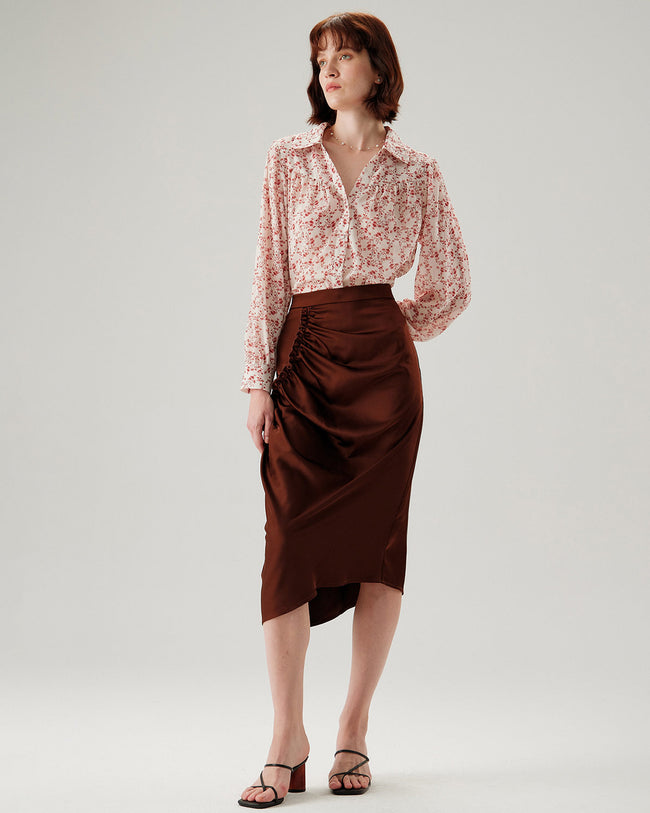10 Parisian Vintage-Chic Pieces: Retro and Elegant
Forget the postcard clichés. Parisian vintage style isn’t berets and tourist prints; it’s edit, proportion, and texture—pieces with history that still earn their keep today. Below, ten items that pass two tests:
-
Authenticity: each has clear vintage roots;
-
Utility: each unlocks multiple outfits, not just a vibe.
The Capsule Rules (so it actually works)
-
Palette: black, navy, bone, camel; one deep accent (bordeaux or forest).
-
Silhouette: one structured piece + one relaxed piece per outfit (balance is non-negotiable).
-
Texture over print: bouclé, bias satin, crisp cotton, dense denim, supple leather.
-
Fit mantra: skims the body; nothing squeezes or collapses.
The 10 Pieces—what makes them vintage, why they still work, and how to wear
1) Breton Stripe Knit/Top
Vintage roots: 1850s French navy uniform → Chanel popularized it in the 1910s; Left Bank icons in the ’50s–’60s.
Why now: Adds rhythm to a neutral outfit without shouting.
Pairing logic: With straight jeans and flats, the horizontal cadence balances a long leg line; under a blazer it reads graphic, not gimmicky.
Avoid: Hyper-contrast or oversized stripes that break the torso in the wrong place.
White Striped Boat Neck Sweater

2) Bouclé Tweed Jacket (cropped or waist-length)
Vintage roots: Mid-century collarless jackets defined “ladylike ease.”
Why now: Texture = your print. It lifts denim and anchors slips.
Pairing logic: Cropped length meets the natural waist → raises proportions; weighty buttons and firm shoulder add quiet architecture.
Avoid: Plasticky buttons, scratchy yarns, heavy fringe.
The Solid Cropped Tweed Jacket

3) Silk/Satin Blouse (ivory or navy)
Vintage roots: ’30s bias glamour, ’70s silk blouses.
Why now: Drape softens tailoring and civilizes denim.
Pairing logic: Half-tuck into a midi; the fluid line counterpoints a structured jacket.
Avoid: Glassy shine and see-through fabric—matte, non-clingy finishes feel expensive.
White Square Neck Lace Satin Blouse

4) Single-Breasted Blazer
Vintage roots: Borrowed-from-the-boys tailoring since the ’70s; cleaned up in the ’90s.
Why now: One piece that straightens any look.
Pairing logic: Button stance near the waist → instant shape over slips or jeans.
Avoid: Thin, shiny blends and shoulder pads that jut past the arm bone.
The Solid Collared Single Button Blazer

5) Straight-Leg Jeans (high rise, ankle graze)
Vintage roots: ’50s–’90s straight cuts—pre-stretch denim.
Why now: Plays well with flats and cropped jackets; cleaner than skinnies, kinder than wide-legs.
Pairing logic: Dark rinse for office polish; gentle fade for weekend air. Hem to your flats—don’t “make do.”
Avoid: Whiskers/holes that date fast.
The Blue High Waisted Straight Leg Jeans

6) Little Black Dress (LBD: slip, column, or knit)
Vintage roots: Chanel’s 1920s simplicity; ’90s slip revival.
Why now: A problem-solver, not a party cliché.
Pairing logic: Slip + blazer (draped) = day-to-night; knit column + bouclé = texture dialogue.
Avoid: Over-ornament; let cut and fabric carry it.
Black Contrast Slip Mini Dress

7) Trench Coat (mid-calf, unfussy)
Vintage roots: WWI heritage → film-noir staple in the ’40s.
Why now: Weather shield that doesn’t kill the outfit.
Pairing logic: Raglan or neat set-in shoulders layer over blazers; tie once and let the belt ends fall—movement matters.
Avoid: Flimsy fabric and stiff, over-shiny coatings.
The Solid Collared Single Button Blazer

8) Midi Skirt (A-line or bias)
Vintage roots: Tea-length ’40s skirts; ’30s bias cuts.
Why now: Moves like a dress, works like a separate.
Pairing logic: Waist at your bend point; hem on the slimmest calf; bias needs lining for a clean fall.
Avoid: Elastic waists that bunch under blouses.
Coffee Ruched Pencil Midi Skirt

9) Ballet Flats / Mary Janes / Loafers
Vintage roots: Bardot’s ballet flats (’50s), Mary Janes (’20s to ’60s), loafers (’30s prep to ’50s cinema).
Why now: Low-key elegance that walks.
Pairing logic: Almond/square toe keeps lines modern; 1–2 cm heel saves posture; show a hint of ankle to lengthen.
Avoid: Paper-thin uppers that wrinkle on day two.

10) Small Structured Bag + Silk Scarf
Vintage roots: ’50s boxy handbags; heritage scarves since the ’30s.
Why now: A firm outline finishes the look; a scarf gives a single, quiet color note.
Pairing logic: Knot at the handle or neck; keep prints small and colors deep.
Avoid: Oversized totes that collapse the silhouette.

